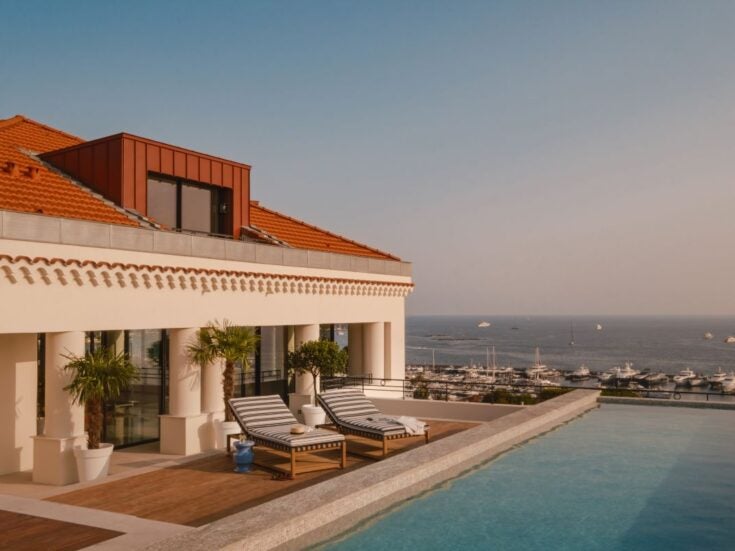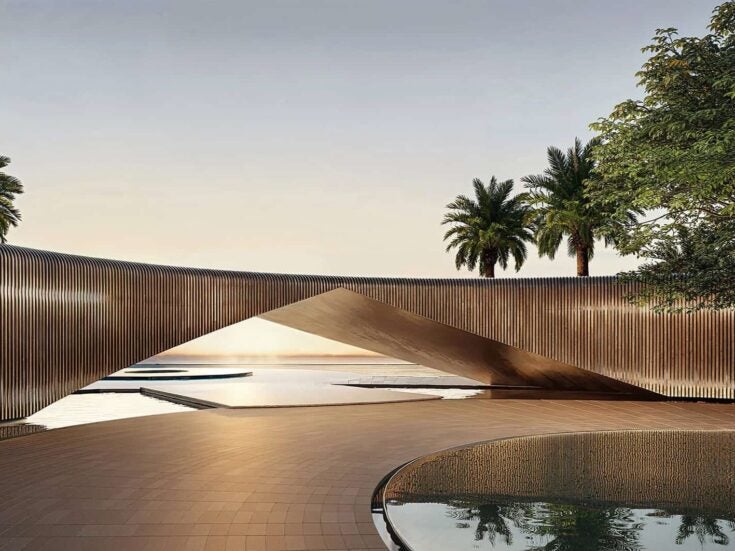
Mayfair! Belgravia! Knightsbridge! London is home to a dazzling number of prime neighbourhoods that have long enticed ultra-high-net-worth individuals.
The most famous of these enclaves have lent their names to films, books and TV series (although Made in Chelsea hangs like a cloud over many residents in SW3…) and all are home to the rich, famous and powerful; lured by the promise of world-leading culture, education and real estate.
This remains true even in the face of apparent challenges, including the axing of the non-dom regime and Labour’s pledge to levy VAT on school fees. Indeed, the city’s property market is proving remarkably resilient.
- Best property agents 2024
- Best country specialists 2024
- Best buying agents 2024
- Best property lawyers 2024
- Best removals and shipping specialists 2024
- Best property investment, finance, management & private office services 2024
The UK is the most popular location for UHNWs seeking to buy a new home, according to the Knight Frank Wealth Report 2024 and researchers from Savills expect the prime London market to grow by almost one-fifth by 2028. Anecdotally, leading property agents report ‘good activity’.
Jo Eccles, a Spear’s Top Flight star buying agent with Eccord who has sourced over 400 homes for her UHNW clients, tells Spear’s that the number of people reentering the market this year has been ‘strong’, – with many buyers ‘reassured by the fact that prices for best-in-class properties have remained stable.’
But the question remains: where to buy?
Many of London’s most exclusive neighbourhoods are eminently suitable. Yet only advisers fully embedded in the HNW world can paint a complete picture of the personality, peculiarities and problems of each postcode. Mayfair, for example, is popular with overseas investors, but might prove too transient for a new arrival wanting to put down more permanent roots.
Mayfair: A golden age for an international darling
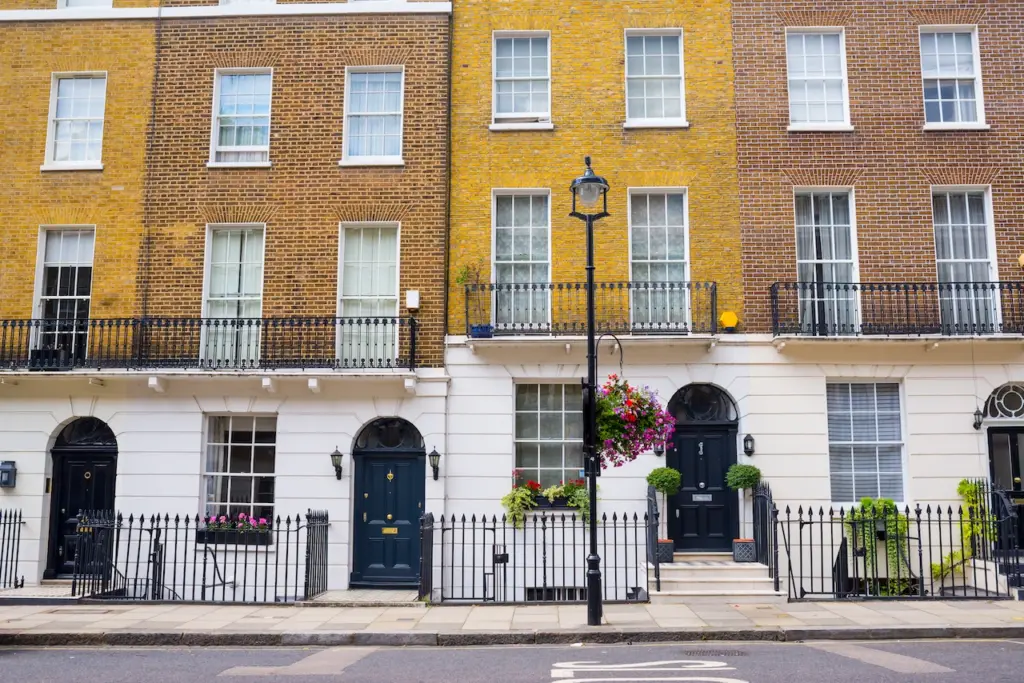
Mayfair has the sort of international PR clout most multinationals could only dream of drumming up. Stretching from Bond Street in the north to Piccadilly in the south; Hyde Park in the west to Regent’s Street in the east, this stylish West End quarter encompasses retail titans like Selfridge’s and Savile Row, as well as hotels like Claridge’s and The Connaught. In short: buying property in Mayfair is like skipping the London social queue and gaining entry to one of the neighbourhood’s many private members’ clubs. (Annabel’s, Mark’s Club, Maison Estelle…).
‘I think it still has that very international appeal, where people have got a London base and they want to slot straight into the heart of the social scene here,’ reveals Eccles. She notes Americans have a strong pull to the historical charm, while many Middle Eastern and Indian UHNWs appreciate the centrality and convenience the neighbourhood offers.
Mayfair also boasts ‘high-spec’ and ‘hotel-style’ developments like 1 Grosvenor Square, formerly the US embassy on the Duke of Westminster’s Grosvenor Estate. Meanwhile, soon to open on Hanover Square is the long-anticipated Mandarin Oriental Mayfair, which will boast a collection of 77 private residences.

Roarie Scarisbrick, who has helped high-end buyers to source their dream super-prime properties over two decades at Property Vision, explains these turnkey properties are appealing to the international jet-set who fly in and out of the UK. ‘They want their base in London, but they’re only going to be here for short periods of time,’ he explains. ‘They want it to be simple, easy, and to possibly replicate the model they’ve got for their property in other cities.’
The neighbourhood has also benefited from a careful rejuvenation project over the last few years, overseen by the Grosvenor Estate. Mount Street, says Scarisbrick, which is home to The Connaught and a collection of popular restaurants, including Richard Caring’s Bacchanalia, ‘was so disappointing years ago, but now is so glamorous. They’ve spent money on lifting everything’.
Such a concentration of venues in which to ‘see-and-be-seen’ also makes Mayfair attractive to a younger crowd. Research published in 2019 by Peter Wetherell’s eponymous estate agent firm, found 60 per cent of Mayfair residents were under the age of 44.
Yet the neighbourhood’s vivacity is not for everyone. ‘We have clients where the husband absolutely loves Mayfair, but the wife thinks it’s too frenetic. It’s not villagey enough for her,’ Eccles says.
But it seems there are enough May-fans to make this once fusty neighbourhood enough of an appeal for 2024. In a blog post last year, Savills declared that Mayfair had ‘re-entered a golden age’ and ‘recaptured its title as London’s most valuable real estate.’ Fortunately, it is also replete with a great many wealth management shops to service the neighbourhood’s homeowners.
Chelsea: Bankers, bohemians and American broods
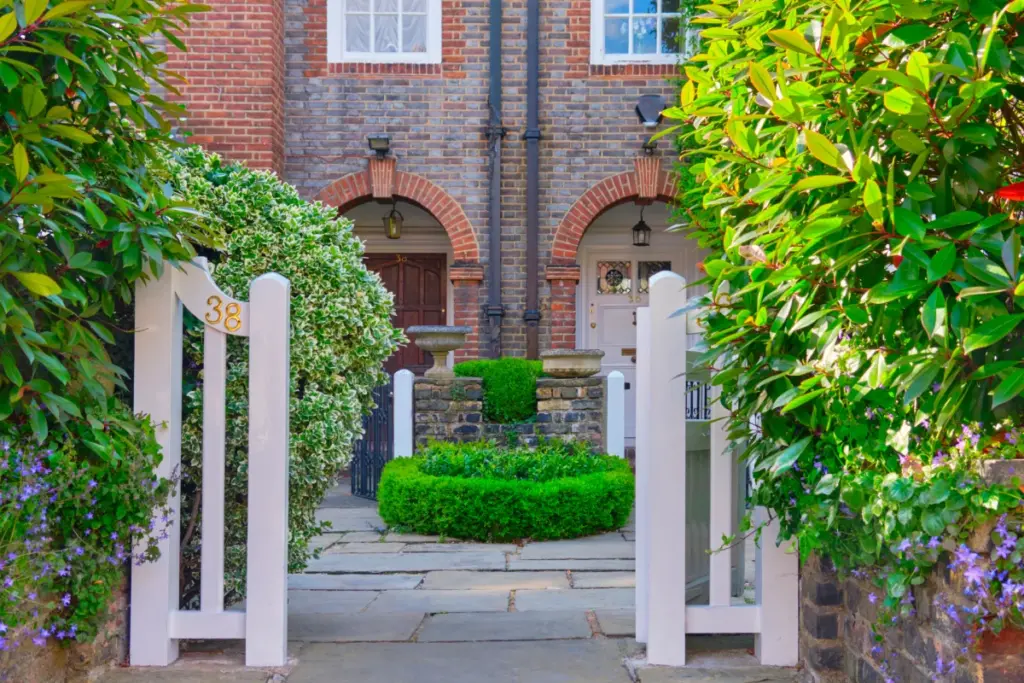
The birthplace of the Sloane Ranger, Chelsea is now home to bankers and bohemians who are drawn by its ‘niche restaurants and niche retail’, according to Jonathan Hewlett, who heads up Savills Private Office from its base on Sloane Street.
The King’s Road remains at the epicentre of life in this traditionally posh area but Pavilion Road, recently developed by Cadogan Estates, is pulling in a younger crowd with its smattering of social media-friendly artisanal bakeries, cheese shops and brunch staples like Granger & Co or Bread Ahead.
The street is home to another unlikely calling card for young HNWs: KXU gym. ‘It’s super-cool and we’ve had clients base their searches on it,’ says Eccles. ‘It’s like an institution, if you’re a young bachelor or bachelorette, or you live in the area and you’re into keeping fit.’

To benefit from all the neighbourhood’s trappings, millennial and Gen-Z HNWs will need £4-£8 million for 2000-3000 square feet pad near Sloane Square. But another popular choice is the Chelsea Barracks development on Chelsea Bridge Road, where apartments for sale begin at £3.3 million and stretch all the way to £55 million. Its residences connect Chelsea to the West with Belgravia to the North and Pimlico to the East.
However, it’s not just young upstarts who call Chelsea home. ‘Kensington and Chelsea are a bit more of a family area,’ says Jaishree Brice, an UHNW specialist at Sotheby’s International Realty who works closely with Americans and South Asian buyers. She notes many families appreciate its ‘village feel’, adding: ‘Those looking for nice family homes go for Kensington and Chelsea, and this is good for both American and Indian buyers.’
American families used to spacious properties back home might be among those particularly drawn to SW10, which runs towards the edges of Fulham and stretches down to Battersea Bridge. These residences offer impressive square footage and private gardens, but also come at a price: a ‘£15 million-plus’ price tag, according to Eccles.
Knightsbridge: Hooray for Harrods
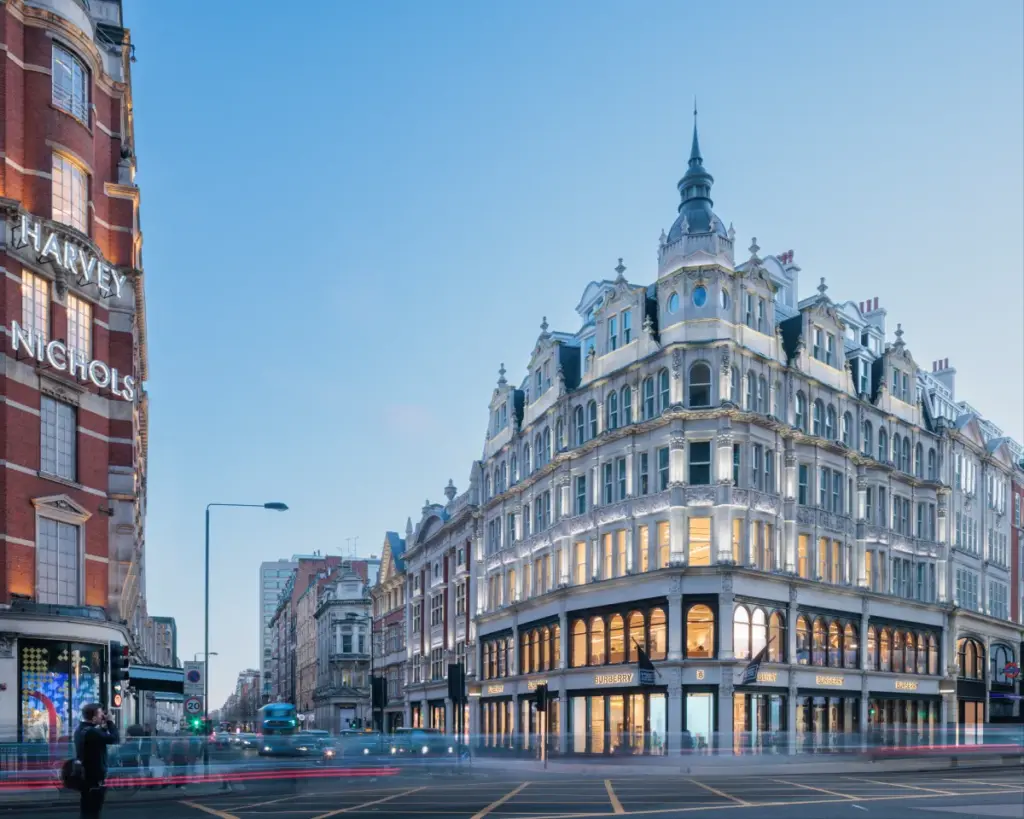
The appeal of Knightsbridge can almost be summarised in a single word: Harrods.
In 2018, Dataloft carried out research into what it dubbed ‘The Harrods Effect’, which showed a price per square foot premium that rises with proximity to the popular department store. This trend was observed more recently by Beauchamp Estates, which sold a six-bedroom apartment in what was once the retailer’s bakery and chocolate factory for £18 million in Q4 2023. Distance to Harrods was a key selling point. ‘Without a doubt there is both a cachet and a price premium for living close to the Harrods store,’ Rosy Khalastchy, director at Beauchamp Estates, said at the time.

Eccles agrees.‘Middle Eastern or Asian buyers tend to want the new-builds, the real “turnkey life” in all respects. They can also fall out of their apartment and into Harrods. We’ve had many searches anchored around proximity to Harrods.’
[See also: The best property agents in 2024]
However, these seasonal shopaholics might make for transient neighbours for UHNWs who want a sense of community. Ultra-luxe pads at 199 Knightsbridge and One Hyde Park are beloved by internationals – and may well be an improvement on the ‘dusty old buildings’ that once dominated the market in the neighbourhood, Scarisbrick says – but local UHNWs may want to find neighbours who aren’t divvying up their time in different corners of the globe.
That said, there are ‘quieter enclaves’ of Knightsbridge that set it apart from Mayfair. Eccles notes one recent transaction where three apartments on leafy Cadogan Square were knocked into a single apartment.
Like the Duke of Westminster in Mayfair, the Earl of Cadogan has also been busy revitalising his Knightsbridge stronghold. Eccles explains: ‘They are doing a huge amount of work to Sloane Street, including planting 100 new trees, and making the pavements wider. What they want to do is create a real pedestrian avenue or boulevard, to link Knightsbridge and Chelsea. ‘Before, Sloane Street was a bit of a cut through, and Knightsbridge and Chelsea were a bit disconnected. It has really brought the two together.’
Scarisbrick adds: ‘It used to be a dusty wasteland… but now, actually, it’s somewhere you really want to go.’
Wealthy renters can also enjoy the turnkey appeal offered by Knightsbridge Gardens, which bills itself as the UK’s first super-prime rental-only development. Developed by Saudi Arabia’s Olayan Group, its 33 homes sit right above the flagship stores of Burberry and Apple, where there’s a choice of four different interior design styles.
Belgravia: Trophy homes, diplomats and five-star neighbours
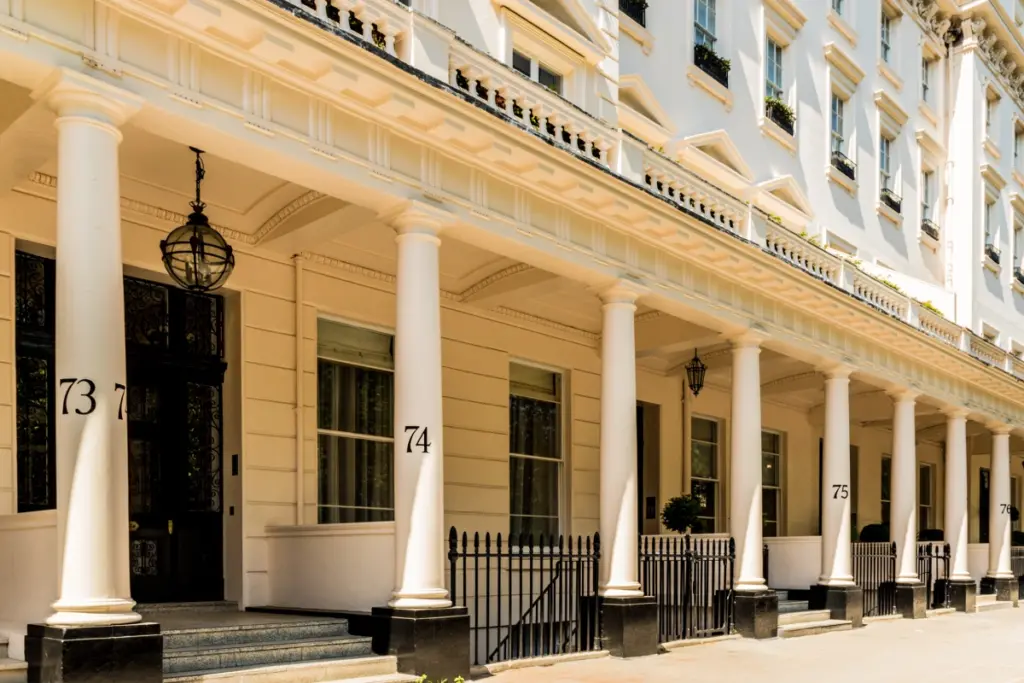
As well as Mayfair, Brice says that wealthy Indian buyers love the super-prime homes available in Belgravia. Those closest to Green Park might be able to spy views of Buckingham Palace, but many abodes in the neighbourhood come with the ‘delight’ of having views over garden squares, says Hewlett. ‘In Eaton Square, you buy one because of the scale of the original house, and the space and grandeur you get. But you pay extra for a view.’
For a three-bedroom apartment overlooking Eaton Square, prices tend to hover at around £4-5 million, but trophy assets can come in at over £10 million. At the nearby Wilton Crescent, where a row of gorgeous Georgian townhouses overlooks its own private gardens, full-sized homes may set punters back by £20 million.
There’s also the ultra-luxury and convenience offered by Hyde Park Corner’s Peninsula London. Designed by famed American architect Peter Marino, UHNW residents are taken close care of by the same team of stewards who look after the hotel. ‘We make a note of when their cars need an MOT, when the plants need to be watered, or the windows need to be cleaned,’ says Lydia Varaona, who serves as the Peninsula’s director of residences. ‘It’s really all the details. Our aim is for residents to say to me: “Do you know why I love living here? It’s because I don’t have to think about anything that’s cluttering my life”.’
[See also: Inside the Peninsula Residences: the ultimate London trophy apartments]
Away from the branded residences and charming private gardens, many UHNWs choose to make a home in Belgravia for its rich culinary offering. There’s Muse by Tom Aikens on Groom Street, Pétrus by Gordon Ramsay on Kinnerton Street, Hunan on Pimlico Road and Jumeirah’s The Lowndes Belgravia, which is headed by chef Isabela Vaz.
Belgravia is also one of London’s most prominent diplomatic neighbourhoods. On Belgrave Square, an UHNW can stroll past the embassies belonging to Norway, Germany, Portugal, Malaysia, Turkey, Syria, and Trinidad and Tobago – on their way to a world-class ‘fusion’ restaurant, no doubt.
Marylebone: Families, think twice
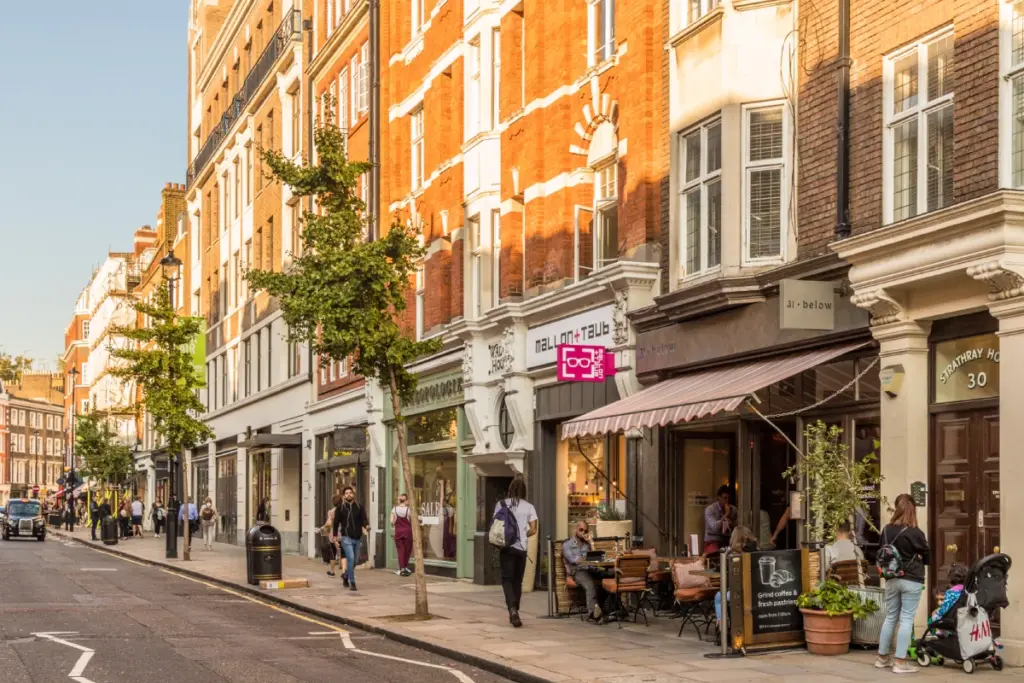
If a ‘village feel’ is what you’re after then there is surely none chicer than Marylebone, which has established itself as one of the capital’s culinary hotspots.
‘It would be a super cool place to have a pad and to go out for dinner,’ says Scarisbrick. ‘If you live on Marylebone High Street, you could go to 100 restaurants within a five minute walk that you would actually really want to eat in. But really, there’s hardly a tree in sight, and there’s traffic everywhere!’
If one can get past the lack of flora, they will indeed be overwhelmed by the number of restaurants they’ll have to ‘flag’ for future visits on Google Maps. There’s Kol on Seymour Street, which has the accolade of being London’s only Mexican Michelin-starred restaurant, and chef Giorgio Locatelli’s Locanda Locatelli, which has held onto its star for more than two decades.
[See also: The best prime property buying agents in 2024]
This ‘unrelentingly urban’ environment also makes it a difficult choice for many families. For Eccles’ clients, meanwhile, it can be a challenge to find an appropriate family home in the district. ‘We find Marylebone is great for apartments, but it’s really tricky for family houses. And the ones that are there are really vertical, really narrow, with six stories.’ Many just have a ‘small light-well patio, that rarely gets any sunlight.’
Yet the crowd that do make a home there ‘absolutely love it,’ Eccles adds. ‘A lot of family-house buyers will very, very reluctantly leave Marylebone.’ For those that will leave, for the sake of their UHNW offspring, many will go for a neighbourhood that may be a bit leafier, such as St John’s Wood or Islington – but is still close.
Notting Hill: Schools-first community
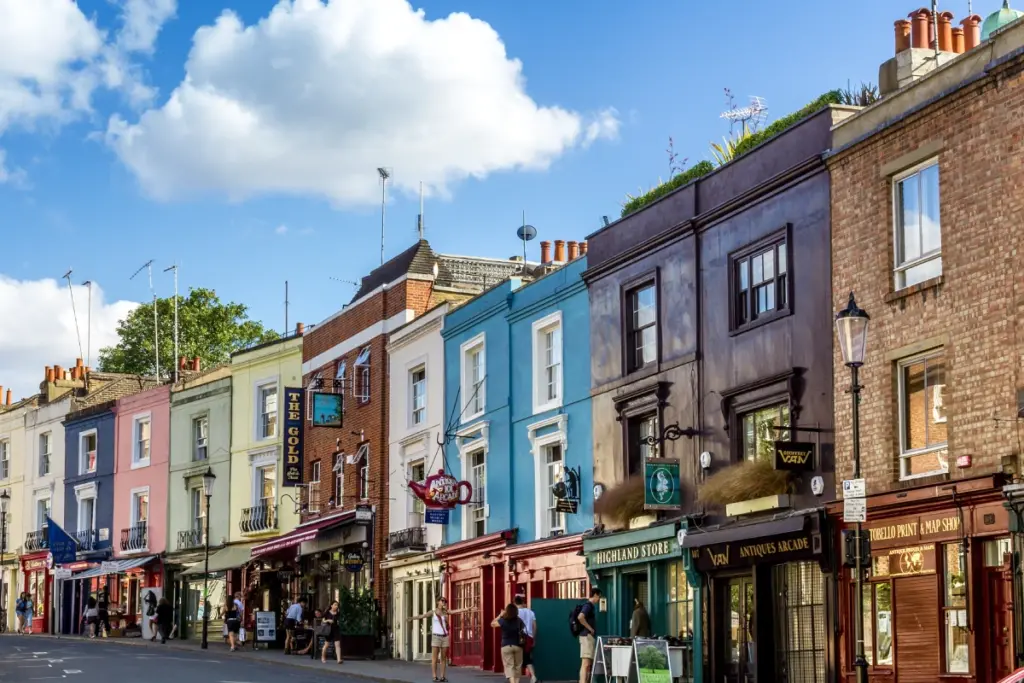
‘Notting Hill’ might conjure images of those distinctive candy-coloured houses (or of Hugh Grant in his prime) but the appeal of this ever-popular London neighbourhood goes so much deeper.
There is a ‘wealth of retail and restaurants’ that pull buyers from nearby neighbourhoods like Queensway and Holland Park, says Hewlett, who also draws attention to the charms of the ‘wonderful communal gardens’ shared by multiple rows of houses.
Alongside Notting Hill Gate’s wide array of charming pubs – including the Churchill Arms, where the exterior is covered in violet and crimson flower bushes – others will enjoy the subtle charm of Sally Clarke’s eponymous neighbourhood diner, and Charles Lea’s beloved wine shop.
But top of the wishlist for many residents is the calibre of education. Eccles points to Pembridge Hall and Wetherby School, two primary schools which sit side by side and overlook the luscious trees of Pembridge Garden Square.
These gardens also create a sense of community that is missing from many London neighbourhoods. ‘Those streets around Notting Hill and Holland Park, which are laid out around the communal gardens, are so unique,’ says Scarisbrick. ‘What a phenomenal way to live as a family. It’s such a green and rural-looking environment, and particularly those houses which open straight onto the gardens, that’s a very nice way of living in a city.’
After time spent in Notting Hill, those looking to downsize may want to consider an apartment at the nearby Park Modern, which sits near Queensway Station (that’s if they’re not interested in the £60 million penthouse on the new development’s top floor, which has over 7,000 square feet of space to play with).
St John’s Wood: Space without the sky-high price tag
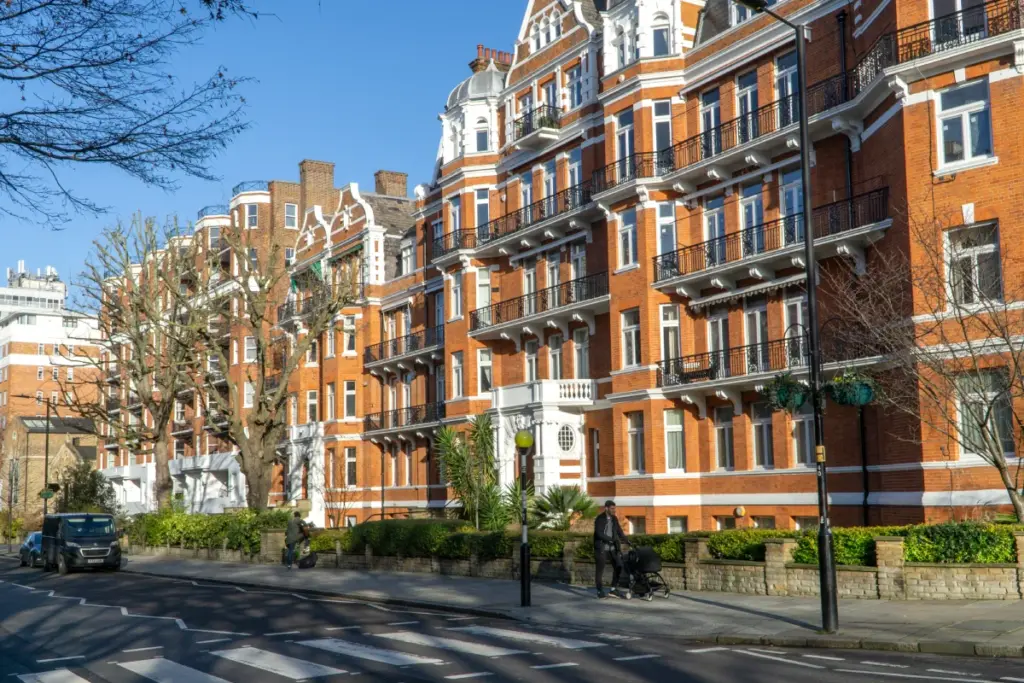
Close by to the stunning white stucco terraces of Regent’s Park, St John’s Wood is favoured by ‘all nationalities’, says Hewlett. ‘You’ve got a lot of apartment buildings, but you’ve also got detached houses on the likes of the Avenue Road. For a lot of international purchasers, it’s the closest opportunity in the centre of town to have a detached house in its own grounds, with off-street parking.’
Properties in the area can also come with a hefty discount to other nearby favourites. For one private equity client, Eccles says she sourced a 5,000-square-feet property spread over three floors, for £10 million. ‘Whereas in Notting Hill, you’d be paying at least £20 million for that.’ As well as being ‘probably 25 per cent cheaper on a price per square foot basis than it is in Notting Hill or Holland Park’, she says UHNWs are also drawn to St John’s Woods’ wide variety of architecture and its big gardens. But, she adds, ‘the scene isn’t as good.’ Although buyers do love the Panzer’s Delicatessen supermarket, and for sports-obsessed UHNWs, the buzz of test matches at Lord’s Cricket Ground won’t disappoint.
[See also: The best property lawyers for 2024]
Even if there’s a quieter feel to St John’s Wood in terms of shops and restaurants, the neighbourhood has still managed to attract some prominent UHNWs and A-listers over the years, including Bill Nighy, Kate Moss, Paul Mccartney and Damian Lewis.
Again, it’s a bigger-hitter for any US family, given the American School in London’s outstanding reputation among American clients. Set on Waverley Place, the school’s modern facilitates, its broad curriculum and its success with US Ivy League entries has allowed it to command one of highest termly price tags of any day school in London, with fees that sit at £38,000 for pupils in grades 9 to 12 (running from the ages of 14 to 18).
Any UHNW looking for a St John’s Wood apartment could consider Regal London’s One St John’s Wood, a collection of 112 homes – where an immaculate show apartment was dressed by international design studio Angel O’Donnell at the launch in November 2022.
One to watch: Bayswater
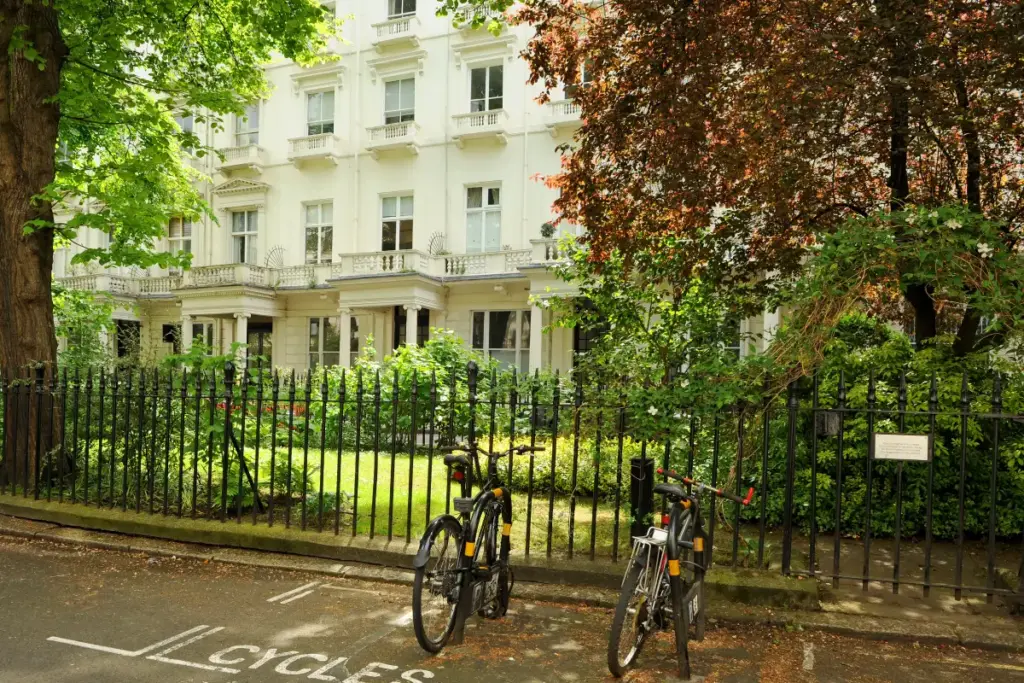
Yes, you read that right. This long overlooked neighbourhood on the north-west corner of Hyde Park is enjoying its moment in the sun thanks to some major redevelopment projects.
‘With the regeneration of the Bayswater area and The Hyde Park estate, the north of the park is now considered the next core area of London’s finest properties,’ Becky Fatemi of Sotheby’s International Realty recently told Spear’s.
‘With Six Senses and several high-profile new luxury residential schemes being built in the area, coupled with the rarity of such period properties, this becomes more than just a home and more of a collector’s item.’
This area of London has become increasingly popular with ultra-high-net-worth buyers and is tipped to see further growth over the next five years, with large-scale regeneration driven by the opening of luxury residential developments including Park Modern and The Whiteley.
Watch this space.

